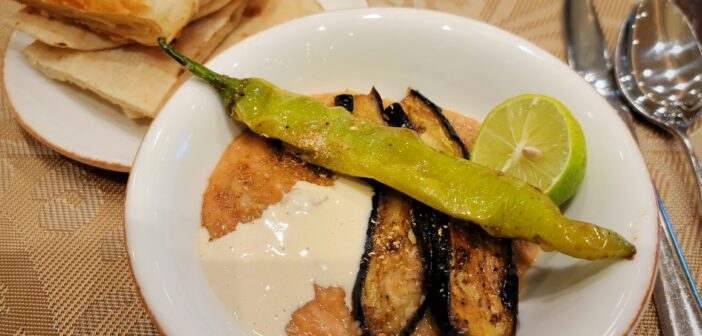This ful recipe from Chef Hari Pulapaka is clearly unconventional and possibly largely unexplored. According to Chef Hari, “Ful, the quintessential dish indigenous to many countries in the Middle East and Africa is pretty close to gastronomic perfection.” (Click here to read about Chef Hari’s encounter with the dish during his travels.)
The recipe for Chef Hari’s creole take on the traditional bean-based stew is below, but first, a few of his thoughts about the word “creole” as opposed to “Cajun”: “In my opinion, the everyday use of these words provides a common cause of confusion, but the terms should not be used interchangeably. While there are definite commonalities, one distinction is place of origin. Creole is considered more a product of New Orleans, the behemoth of culture and identity in the state of Louisiana. Creole is the formal amalgamation of Spanish, Caribbean, and certainly French, influences. Cajun on the other hand is influenced by the Acadiana region of the southwestern part of the state, also with a strong French influence. Some references refer to the presence of tomatoes in Creole and absence/omission of tomatoes in Cajun cuisine. That alone seems a bit flimsy a distinction if you ask me.”
Feel free to use a commercially made spice blend or make your own (recipe below). For the fava beans that are the backbone of this recipe, visit one of Central Florida’s many international markets.
Ful Creole
Serves 4
1 large white or yellow onion, diced
2 sticks celery, diced
1 small green bell pepper, cored and diced
5 cloves fresh garlic, minced
3 sprigs fresh thyme, leaves picked
1 sprig fresh rosemary, leaves picked, chopped
1 tablespoon creole seasoning (store-bought or homemade–recipe below)
2 teaspoons cumin seeds, dry toasted and powdered in a mortar and pestle.
1/2 teaspoon freshly ground black pepper
1/2 teaspoon ground cayenne pepper (or, as preferred)
few drops of a vinegar-based hot sauce (or, as preferred)
2 bay leaves, fresh if available
2 large tomatoes, diced
2 cups dried small fava beans, soaked starting in warm water, overnight (substitute canned, if dried is unavailable)
1 quart water or vegetable stock made from trims (more or less)
1/4 cup flat leaf parsley, chopped finely
1/4 cup thinly sliced scallions with tops
1/4 cup tahini
lemon or lime wedges
chopped hot green chiles, like serrano or hot Hatch
1/4 cup extra-virgin olive oil
salt & pepper, in stages and per taste
Method
Over medium heat, start with the olive oil and sauté the onions, celery, and bell peppers until they are soft and slightly caramelized. Next, add the remaining fresh thyme, rosemary, and minced garlic. Stir briefly for about a minute being careful that the garlic doesn’t burn. Next add the creole blend of spices, salt as needed, and bay leaves. Stir for a few seconds. Add the tomatoes and stew for 5 minutes. Drain and add the fava beans and water/stock, bring to a simmer, taste the broth for seasoning, adjusting as preferred. Reduce the heat to medium-low, cover, and simmer on low, stirring occasionally for about an hour. Check to make sure the beans are soft, cooking longer, as necessary. Stir in the parsley, scallions, and tahini. Re-season at the end as desired and serve with a sprinkle of toasted cumin powder, Aish Baladi, Saboob, or traditional pita bread, a wedge of lemon or lime, and chopped fresh hot green chiles (optional).
Creole Spice Blend
Yields approximately 1 cup
1 tablespoon paprika
2 teaspoons black peppercorn
2 teaspoons onion powder
1 teaspoon dried oregano
2 teaspoons cumin seed
1 teaspoon garlic powder
1 teaspoon chili powder
1 tablespoon coarse salt
Method
Dry toast all the ingredients for 10 minutes in a heavy-bottomed pan, like a cast iron skillet. Let the mixture cool before grinding to desired fineness. Store in an airtight container.
Over the years, any dish labeled “creole” seemed to instantly draw curious diners at the restaurant. And why not?! Alongside deep-flavored sauces from India, China, Thailand, and many countries in North Africa, to name only a few, the food from Louisiana promises big and bold flavors. It is completely reasonable and possible to make creole and Cajun inspired dishes while sticking to only vegetarian ingredients. The recipe below is a good starting place for that journey.



